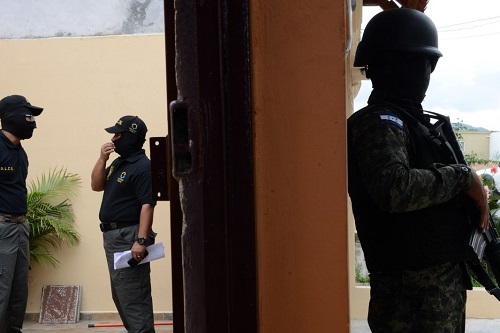AFP photo
By
Ricardo Swire
Caribbean territories and illegal drug traffickers have courted since the 1960s. Antigua & Barbuda, Barbados, Dominica, Grenada, St. Kitts & Nevis (SKN), St Lucia, St. Vincent & the Grenadines (SVG) make up the eastern edge of the Caribbean’s transit zone for international cocaine and marijuana movements. The tropical archipelago’s allure as “middle-man” in the drugs trade has its genesis in geographical location, in relation to distance from North America and Europe.
As “Vortex of the Americas” such unique positioning masks shipment origin, as dug consignments often transit multiple islands. Some consignments of Colombian cocaine are transported to Venezuela and onward to Guyana, CARICOM member Grenada is used as a storeroom for marijuana and cocaine shipments transiting from St Vincent and Trinidad. In 2012, as a modification to the Caribbean Basin Security Initiative (CBSI), US Customs & Border Protection Agency (CBP) officers incorporated unmanned drones on patrols of Caribbean airspace.
CARICOM intelligence data approximated sixty percent of cocaine supplies, passing through Antigua & Barbuda, are destined for the United Kingdom. Twenty-five percent goes to America and ten percent to the Dutch Caribbean island St Maarten. Barbados is a cocaine and marijuana transit island. Within the past five years domestic marijuana cultivation has significantly increased. Rascal employees within key commercial transportation positions on the island, such as airport/seaport staff or FedEx and DHL, assist transnational trafficking networks.
Ninety-nine percent of marijuana that enters Barbados is consumed domestically, ocaine use equating five percent of the transiting amount. Dominica serves as a both trans-shipment and warehouse facility, for drug consignments transported to America and Europe. The island unofficially accommodates small scale marijuana cultivation. Grenada’s counter-narcotics data calculated seventy percent of cocaine supplies are intended for the UK, twenty percent for America, ten percent used by residents.
On the island Federation of SKN resident South American drug traffickers coordinate transhipments to the US and UK. Such non-nationals also control the local supply. Invading transnational drug trafficking organizations are well-organized, influential and savvy. Kingpins rely on a worldwide network of personnel, technological assets and financial resources that can rival those of international Fortune 500 businesses. Trinidadian Dole Chadee was an under-boss in Colombian narco kingpin Pablo Escobar’s notorious drug syndicate.
Today Mexican mega-cartels are principal drug trafficking caretakers. The Sinaloa Federation, Gulf Cartel, Tijuana Cartel, Juarez Cartel, Los Zetas and La Familia project fluid, dynamic, for-profit syndicates. These Cartels operate under the umbrella of conglomerates, but mainly function as independent small-scale franchises. In 2015 regional counter-narcotics law enforcers intercepted US$2.5 million worth of marijuana, warehoused on Trinidad’s sister island Tobago. Royal Antigua & Barbuda Police Force Drug Squad officers seized US$10.4 million worth of marijuana.
That year Coast Guard resources, deployed on the Caribbean Sea, stopped cocaine shipments collectively valued US$30.8 million. Two years prior seizure of ninety-one metric tons of white powder was the highest recorded Caribbean cocaine flow since 2003. The discovery and dismantling of Puerto Rico’s (PR) first methamphetamine trafficking organization also occurred in 2013. Chinese precursor chemicals preferred for production of Central America’s illegal meth industry. PR is a US owned Caribbean island.
Washington quickly adjusted its counter-narcotics strategy and introduced the first federal plan of attack against Caribbean drug trafficking and gang violence. Six novel objectives combined “hard” and “soft” approaches, such as aggressive interdiction/enforcement operations and reduction of youth drug use/addiction projects. During this retooling process US Customs & Border Protection launched its mobile App that allows agents faster access to law enforcement databases. The US revised plan’s other technological introductions included a special App that accommodates anonymous crime tips to select police hotlines.
Ricardo Swire
Ricardo Swire is the Principal Consultant at R-L-H Security Consultants & Business Support Services and writes on a number of important issues.



No Comments Yet!
You can be first to comment this post!